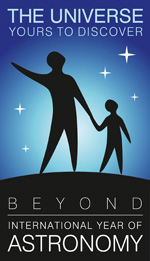Saturn’s Rings
Who can ever forget their first view of Saturn through a telescope? Even with a small telescope, its magnificent rings never disappoint anyone. And some even can’t believe that it’s real… they are wondering if I stick a picture of Saturn in front of my telescope…
Ah, the rings… the most dramatic features in the Solar System… but have you ever wondered where did they come from? Are they there since the beginning of the Solar System, or they are formed later in the history?

Actually, no one knows for sure. One of the possibilities is that in Saturn’s early history, an ice moon or comet came too close and was torn apart into pieces by Saturn’s gravity. Or it may be two objects collided, shattered and their pieces distributed around the planet and became the rings. It is also possible that the rings form from the leftover materials that never get to become part of the planet or moon.
Some of the fainter rings came from dusts and particles that gets knocked off from moons when they are hit by micro-meteoroids or from geysers spewing out from moons.
So we think we know where the rings came from.
But how long have they been there?
It seems not possible that the rings are as old as Saturn itself, which is about 4.5 billion years old. This is because the rings are too bright – if the rings are as old as the Solar System, then we would expect that dirt and dust created by meteoroid impacts covered up the rings’ particles. Over time, the rings will be darkened by meteoric dust. So if the rings are “clean and shiny”, it may imply that they are young; it was calculated from Voyager measurements that the rings are only about 100 million years old.
100 million years is only a very brief period in our whole Solar System history of 4.5 billion years. This implies that we are lucky – we happen to be around at the right time to see the rings.
There is a basic statement in astronomy that we don’t live in a special place or in a special time. And it happens that we are around at this special time to see the rings make astronomers uncomfortable.

Recently a finding may make astronomers feel better. Both Cassini spacecraft‘s UVIS (Ultraviolet Imaging Spectrograph) instrument and theoretical calculations by its Principal Investigator Dr. Larry Esposito and his team can allow the rings of Saturn to be billions of years old. This means we humans are not just lucky to see rings around Saturn.
It was found that Saturn’s rings may be more massive than previously thought. The ring particles, instead of countless individual chunks of ice, tend to aggregate into clumps, which leads to an increase of mass by a factor of 3 or more. The new calculations show that if the rings are more massive, they appear less polluted, and thus could be proportionately older. Recycling of ring material can also extends their lifetime and reduces the expected darkening.
This model may not be perfect; but at least it can help to explain something.


